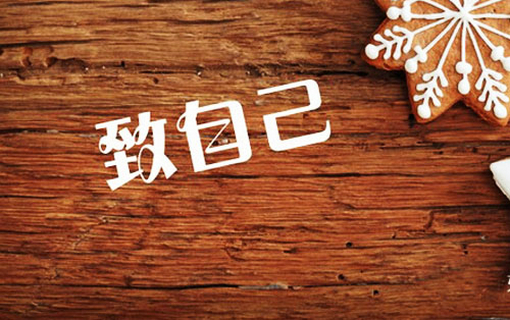
谁能给一篇关于建筑工程质量与安全得演讲稿的范文
2Food security under threat: global response needed Climate change and commodity speculation are among the main factors threatening food security inside and outside the EU, according to a European Parliament resolution adopted on Thursday. MEPs call for urgent measures to combat food price manipulation and ensure that food production is maintained in the EU. Droughts, floods, fires and storms, on a greater scale than in the past, are reducing agricultural capacity all over the world, says the resolution. Soil and water management must be improved to prevent loss of farmland, and the Commission should monitor national climate change mitigation measures, believe MEPs. Tackling speculationMEPs criticise speculation in food commodities, agricultural raw materials and energy markets, all of which puts food security at risk. The G20 is urged to work for the convergence of market regulations by involving countries that are not part of the G20 in the fight against food price manipulation.Parliament asks the Commission to consider giving the new European Security and Markets Authority more power to prevent abuses in commodity markets. Dealing in food commodities should be limited to investors who have a genuine link with agricultural markets, MEPs believe.In addition, MEPs call on national governments not to impose curbs on exports, as these provoke greater uncertainty in the markets and disrupt world markets, and therefore have the potential to drive prices up further at global level. Helping EU farmersTo guarantee food security in the EU, a strong Common Agricultural Policy is needed, says the resolution. Declining farm incomes, caused by higher production costs to meet health, environmental and animal welfare standards, need to be urgently addressed to ensure there are farmers in the EU in the future. Market intervention tools, such as intervention and strategic stocks, must be part of the policy, says Parliament.Support for farmers in developing countriesSince agriculture is a key economic sector in the developing world, MEPs call for a larger proportion of the financial aid for this sector to be used to support more effective and sustainable farming practices. They add that land ownership should be promoted to reduce poverty and increase food security.The resolution was approved by show of hands. 3New threat to global food security as phosphate supplies become increasingly scarceA new report from the Soil Association reveals that supplies of phosphate rock are running out faster than previously thought and that declining supplies and higher prices of phosphate are a new threat to global food security. ‘A rock and a hard place: Peak phosphorus and the threat to our food security’ highlights the urgent need for farming to become less reliant on phosphate rock-based fertiliser. [1]Intensive agriculture is totally dependent on phosphate for the fertility needed to grow crops and grass. Worldwide 158 million tonnes of phosphate rock is mined every year, but the supply is finite. Recent analysis suggests that we may hit ‘peak’ phosphate as early as 2033, after which supplies will become increasingly scarce and more expensive. [2]This critical issue is missing from the global policy agenda - we are completely unprepared to deal with the shortages in phosphorus inputs, the drop in production and the hike in food prices that will follow. Without fertilisation from phosphorus it has been estimated that wheat yields could more then halve in coming decades, falling from nine tonnes a hectare to four tonnes a hectare. The current price of phosphate rock is approximately twice that of 2006. When demand for phosphate fertiliser outstripped supply in 2007\\\/08, the price of rock phosphate rose 800%.In Europe we are dependent on imports of rock phosphate, having no deposits of our own, but the geographical concentration of reserves adds further uncertainty to the future security of our sources. In 2009, 158 million metric tonnes of phosphaterock was mined worldwide. 67% of this resource was mined in just three countries - China (35%), the USA (17%) and Morocco and Western Sahara (15%). China has now restricted, and the USA has stopped, exports of phosphate. [3]Author of the report, Dr. Isobel Tomlinson, said: A radical rethink of how we farm, what we eat and how we deal with human excreta, so that adequate phosphorus levels can be maintained without reliance on mined phosphate, is crucial for ensuring our future food supplies.‘A rock and a hard place’ sets out the actions needed to close the loop on the phosphorus cycle. These include:Changing how we farmDifferent farming systems vary enormously in their reliance on mined phosphate. Organic farms are more resilient to the coming phosphorus rock ‘shock’, as it can only be used as a supplement to nutrient recycling (including crop rotations, green manures, and composting), and not as a replacement. Organic crops generally have a lower fertiliser requirement than non-organic crops, with a greater capacity to scavenge for nutrients through denser and deeper root systems.Changing what we eatEating less meat can reduce the demand for mined phosphate. This is because vegetable-based production is more efficient in its use of phosphorus then livestock production. Although different types of meat have different levels of mined phosphate demand depending on the farming system used to produce them. Meat from livestock grazed on grassland that has not been fertilised with artificial fertilisers, will perform much better than meat from livestock grazed on fields that have been, or livestock fed on grain grown using artificial fertilisers.Changing how we deal with human exretaThe report recommends a radical change in the way we treat human exreta and the need to abandon our current ‘flush-and-forget’ toilet systems in favour of Ecological Sanitation. The report also calls for a change to EU organic regulations to allow the use of human sewage – rich in ‘natural’ phosphate - on agricultural land to ensure phosphate levels are maintained. Globally only 10% of human waste is returned to agricultural soils. Urine alone contains more than 50% of the phosphorus excreted by humans.
关于文明和安全的演讲稿(300—400字就行)
Many people think of disposable chopsticks comparative health, safety, so out repast would only the use of disposable chopsticks, however, some inferior processing of disposable chopsticks due to white retained the sulfur dioxide, the harm far outweigh the sterilized the disposable tableware.Normal manufacturer production of disposable chopsticks used the material is good wood texture, need not through special processing. But some ceased to reduce cost, use are inferior wood, looks skin is darker, for giving chopsticks white, some illegal element sulphur fumigation with bleaching.After sulfur gases bleaching, will produce large amounts so2 composition, and sulfur dioxide encounter cold will solidify. Therefore, in this chopsticks at meal, sulphur dioxide as the air flow easily, cause respiratory tract solidification to cough, asthma and other diseases.Identify the quality of disposable chopsticks, want to check whether printed packaging manufacturer's name, trademark and contact information. The two can smell the smell of chopsticks, if there is stock sour smell of sulphur, had better not use. Of course, the best way is to use cool water cleaning surface, reduce residual chopsticks sulfur dioxide.The Chinese market all sorts of wooden chopsticks consumption is enormous, with the snap-apart chopsticks, for example, consumes disposable wooden chopsticks 4.5 billion pairs (about consumption wood 166 million cubic meters). Each processing 5,000 pairs of wooden chopsticks consumes a tree growth 30 years poplar and national daily production of convenient snap-apart chopsticks consumes more than 100 acres of forest, a year come down 3.6 million mu of total.The disadvantages of disposable chopsticksEverything has its advantages and disadvantages, today, we'll discuss the disadvantages of disposable chopsticks, but I believe, one-time fast faults of the levites will exceed the son. Because of disposable chopsticks, give us the benefit of not many! However, give us the disadvantages of accountants-that is!Speaking of the disadvantages of disposable chopsticks, I could think of from the Internet to see the material: originally disposable chopsticks not invented by the Chinese, Japanese invented and development to China, when the Japanese have a merchant in China and heilongjiang government negotiate the benefits of disposable chopsticks, then says so, our Japanese pay cover plant, the labor, you what all need not tube is the point of wood went, what time is money power is immensely powerful, the Chinese government a think anyway also to our country doesn't hurt, he promised. As I knew Japan annual disposable 257 million pairs, but the Japanese domestic production of disposable chopsticks accounts for only around 3%, 96% of disposable chopsticks was imported from China, as the Japanese island of forest coverage rate up to 65 percent, rarely appears soil and water loss, but in China the forest coverage rate is less than 14% of land resources, desertification, and China each year production 450 billion pairs of disposable chopsticks, need logging 2500 million trees, according to current speed computing, our country will be in 20 years cut all the forest, 20 years can ruin China, if still want to make China the earth with green make-over 200 years is not enough to use, will tell from narrow sense of disposable chopsticks, really health? Actually otherwise, disposable chopsticks, packaging with high temperature disinfection are most sanitary inscription, but actually, because of disposable chopsticks, low price, market share, in order to fight for the market, many small businesses are adopted the sulphur fumigated, hydrogen peroxide, sodium soak, bleaching, talcum powder polished, is in order to reduce costs, in fact there is no hygiene alexipharmic goal, and disposable chopsticks, outer packing polyethylene mould give people the harm is bigger, I believe you ate no plastic bags habit of it, but this from the production line down thing, under high temperature to generate more harmful ingredients, can cause human body to produce a lot of chronic diseases, how health!And, disposable chopsticks and may produce greenhouse effect, because the vicious circle of the relationship, tree less, 2 oxidation carbon increase, the atmosphere is thick, heat difficult to spread to produce the greenhouse effect until then, the victim is so much! Hard to turn back! Therefore I encourage everyone still don't use chopsticks, save resources.很多人以为一次性筷子比较卫生、安全,因此出外就餐只愿意使用一次性筷子,殊不知,一些低劣加工的一次性筷子由于留存有用来“美白”的二氧化硫,其危害远大于消过毒的非一次性餐具。
正规厂家生产一次性筷子所用的原料都是质地比较好的木材,不用经过特殊加工。
但是一些小作坊为了降低成本,使用的都是劣质木材,看上去“肤色”就较黑,为给筷子“美白”,一些不法分子会用硫磺熏蒸漂白。
经过硫磺气体漂白,会产生大量二氧化硫成分,而且二氧化硫遇冷会凝固。
因此,用这种筷子进餐时,二氧化硫随着空气的流动很容易凝固至呼吸道,导致咳嗽、哮喘等疾病。
鉴别一次性筷子的质量,一要查看包装上是否印有生产厂家的名称、商标及联系方式。
二可以闻一下筷子的气味,如果有股酸酸的硫磺气味,最好不要使用。
当然,最好的方法就是用凉水清洗筷子表面,减少残留的二氧化硫。
中国市场各类木制筷子消耗量十分巨大,以一次性木制筷子为例,每年消耗一次性木筷子450亿双(约消耗木材166万立方米)。
每加工5000双木制一次性筷子要消耗一棵生长30年杨树,全国每天生产方便一次性木制筷子要消耗森林100多亩,一年下来总计3.6万亩。
一次性筷子的弊端 每一样事物都有它的利与弊,今天,我们就来讨论一下一次性筷子的弊,不过我相信,一次性快子的弊一定大于利.因为一次性筷子给予我们的好处并不是很多!然而,给予我们的坏处倒是数不胜数! 说起一次性筷子的坏处,我就想到从网上看到的资料: 原来一次性筷子不是中国人发明的,是日本人发明并发展到中国的,那个时候日本有一个商人上中国来和黑龙江的政府协商一次性筷子的的好处,那时候是这么说的,我们日本出钱盖厂,出劳动力,你们什么都不用管就是出点木头就行了,什么时候都是钱的力量是无比强大的,中国政府一想反正也对我们国家没什么伤害,就答应了。
具我所知日本全年一次性257亿双,但日本国内的一次性筷子的产量只占3%左右,96%的一次性筷子却是从中国进口的,做为岛国日本的森林覆盖率高达65%,很少出现水土流失,而我国的森林覆盖率还不到14%,土地资源荒漠化,而且中国每年生产450亿双一次性筷子,需要砍伐2500万棵树,按照目前的速度计算,我国就要在20年内砍完所有的森林了,20年就可以毁了中国,如果还想让中国大地披上绿色的新装200年也是不够用的,从狭义上来讲一次性筷子就真的卫生了吗
其实不然,一次性筷子的包装多数都印有高温消毒清洁卫生的字样,但实际中,因为一次性筷子价格低廉,市场占有率大,为了争夺这块市场,很多小企业都采用硫磺熏,双氧水,硫酸钠浸泡,漂白,滑石粉抛光,就是为了降低成本,实际上根本就没有达到卫生消毒的目的,而一次性筷子的外包装聚乙烯模给人民带来的危害就更大了,相信大家没有吃塑料袋的习惯吧,但是这种从生产线下来的东西,在高温下会产生更多的有害成份,会诱发人体产生很多的慢性疾病,怎么卫生啊. 并且,一次性筷子还有可能产生”温室效应”,因为恶性循环的关系,树少了,2氧化碳会增多,大气层会加厚,热量难以散开,就产生了”温室效应”到那时,受害者就多了!难以回头!所以我劝大家还是不要在用一次性筷子了,节约资源。
食品安全演讲稿400——500字
关注,保障身体健康老师、同学们: 今天我讲话的主题是《关注,保障身体健康》。
随着我国社会经济的迅速发展和人民生活水平的日益提高,人们对健康、对更加关注,特别是“三鹿”奶粉等食品安全事件的发生,更给我们敲响了关注食品安全的警钟。
“食品安全”已经成为关系到国民健康、社会稳定、经济发展、市场繁荣的重要因素。
而对于我们每位同学个体而言,学习和了解相关的食品卫生知识、养成良好的饮食卫生习惯、增进自我保护意识,抵制低劣食品的诱惑,这是非常必要的,也是切实可行的。
但我们时常还会看到在校园周边的杂吃店、餐饮店甚至流动小摊点前,一些学生在购买、食用价廉质次的食品。
那么,你了解看似诱人并且便宜的这些食品背后隐藏着怎样的危险吗
据卫生监督部门的技术人员介绍,由于学生的零花钱相对有限,所以这些经营者绝大多数是以“便宜进便宜出”为原则,购进一些“三无”产品,多数食品就是以色素、糖精为主要原料。
营养专家也发出这样的提醒:油炸、烧烤、烟熏食品不仅会使食物营养成分变性,还有可能因为原料的质量问题而造成毒害,有些甚至含有致癌物,严重危害青少年的生长发育和身体健康。
冷饮在储存过程中不能排除交叉污染,不少销售商是把冷饮与冻肉合放在一起,有的则是原料本身就不合格。
而且,在卫生部门多次检查中发现,学校周边店的进货来源比较杂乱,有的店主不能出具采购食品索证登记,或相关的进货信息记录



